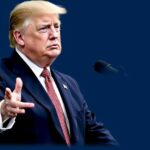India, the United States, and the Dynamics of International Trade Strategy
India’s partnership with the United States has become crucial for countering China, despite ongoing tensions regarding trade policies. As India navigates its position within the international trade order, it faces challenges related to protectionism and its leadership role in the Global South. Insights from experts reveal India’s divergence from global norms, complicating its efforts to bolster its manufacturing sector and engage effectively within the WTO.
India has garnered bipartisan support in the United States as an essential economic counterbalance to China. However, the United States still struggles to fully understand India’s interests, particularly regarding the norms of the liberal international order. The complexities of the U.S.-India partnership pose challenges for both nations in their objective to counterbalance China’s influence effectively, especially in the realm of international trade.
While defense ties between the United States and India are rapidly progressing, their trade relationship has faced persistent strain. The United States criticizes India’s protectionist policies, while India perceives the U.S. as unyielding toward its position as a developing country. With Prime Minister Modi set to visit Washington, trade will likely be a focal point of their discussions, especially concerning India’s significant trade surplus and ongoing tariff concerns.
Experts provide insights on India’s approach to international trade. Kholofelo Kugler highlights that India’s digital trade policies contradict global liberalization norms, impacting its ICT interests. Despite aligning with the U.S. on some digital trade issues, the overall U.S. position remains ambiguous during the Trump administration.
Inu Manak points out that the U.S. retreat from the WTO has allowed India to assume a leadership role within the Global South. However, India’s obstructionist tactics within the WTO have frustrated many countries and inhibited its ability to benefit from the international trade system.
Sarthak Pradhan notes that India consistently employs industrial policy to enhance domestic manufacturing. Although these policies often lead to trade disputes and violate WTO regulations, they reflect a broader trend in global trade practices. However, India’s stringent measures have not succeeded in achieving its manufacturing goals, further complicating its trade position.
The relationship between the United States and India is characterized by mutual interests in counterbalancing China and fostering trade. However, both nations face complexities in cooperation due to divergent views on trade policies and protectionism. As India continues to assert itself in global trade discussions, understanding its stance on key issues such as digital trade, WTO participation, and industrial policy will be essential for navigating the future of this partnership.
Original Source: www.cfr.org








Post Comment